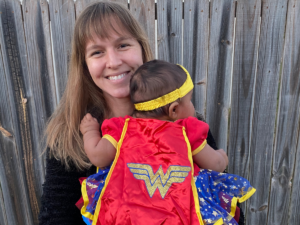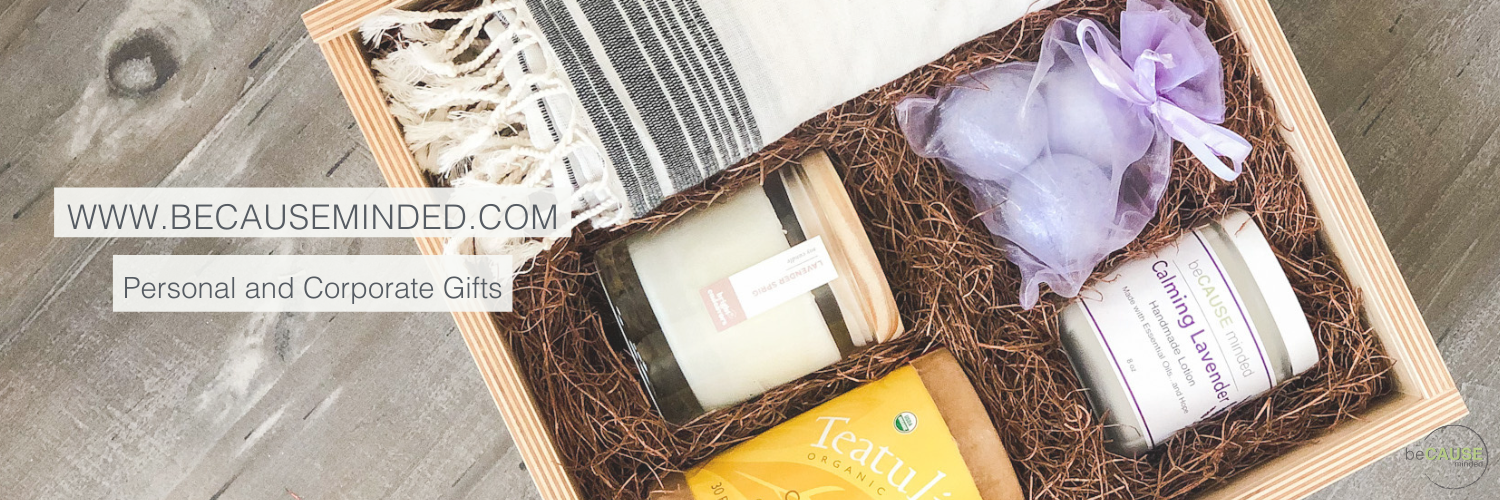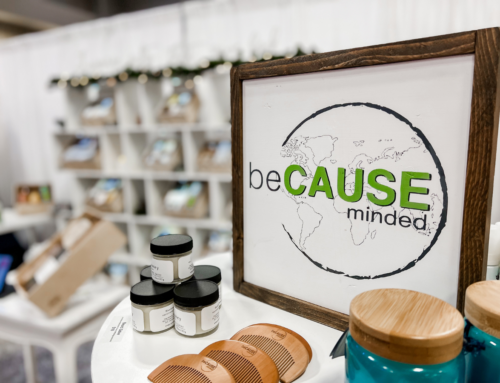Wouldn’t it be great if there was an organization that bridged the gap between foster parents who need support and the surrounding community that wants to help? Foster Village in Austin does just that. Our founder, Jessica Shields, is a foster parent in the Austin area, and knows first-hand how this support can make all the difference for a foster family. That’s one of many reasons we donate the profits from our personal and corporate gift boxes to Foster Village.
 She recently sat down with Chrystal Smith, the founder of Foster Village, to chat about her organization and what she sees as the best solutions to helping kids in care.
She recently sat down with Chrystal Smith, the founder of Foster Village, to chat about her organization and what she sees as the best solutions to helping kids in care.
If you want to check out the interview, head to our Instagram. For those of you who are more into the written word, we’ve included the highlights here.
Q: Who is Foster Village and what do you do?
A: At Foster Village, we provide support to children and families in the foster care system and those intersecting with child welfare. We have two resource centers in Austin. When a child is placed in a new home they’re typically coming empty-handed and so the foster parents or kinship caregivers often have to scramble to figure out all those basic necessities pretty quickly. So, they are able to come to our resource centers which serve as a hub where they can get beds, car seats, clothing and all those basic necessities free of charge.
And then we have a lot of ongoing support because statistically over half of foster parents quit within the first year. So, we want to try to change that and sustain these caregivers along the way.
And then we just really advocate for community engagement beyond the system because we are never going to have a perfect child welfare system. Ultimately the community is the solution to that and really wrapping around these kids and families who are walking through abuse, neglect, and really difficult circumstances.
Q: Why did you decide to start Foster Village?
A: Our family fostered and during our time fostering we developed a relationship with our daughter’s (we ended up adopting) birth mom, walking alongside her during the whole journey. She’s a former foster youth and just hearing her stories and every statistic, unfortunately, she had to face. Then we’d talk to more foster parents and this theme of village kept coming up –
“We need a village,” “We are isolated,” “We feel like we’re drowning,” “We need help, but we don’t know how to ask for help.”Meanwhile, we would talk to our church small group and community, and people tell us, “We wish there was something we could do to help. We can’t foster, but just let us know.” But when you’re drowning, you can’t articulate how to have somebody come in and help you. So, we have all these foster parents and caregivers who are trying to care for these kids who have been through the most tragic circumstances, and then we have this community, which is the majority of the population, and everybody’s like “I wish there was something I could do.” The heart behind Foster Village was bridging that gap. That was based on our personal experience and getting together with other foster parents who were saying the same thing.
Q: What do you think is the main reason most foster parents don’t continue after their first placement?
A: It’s different in every case. There are some where the case goes to adoption, so there is permanency for that child. But, for the most part, I think it’s burnout. What I’ve mostly seen is that it’s not about the kids or the challenges around caring for the kids. It’s the system. It’s really hard to go into something with the desire to be an advocate and to help to break these generational cycles of adversity and to care for kids…and then have this system that’s dictating lots of rules, and lots of regulations. You can’t leave toothpaste on the counter. Just crazy things. A lot of rules that are intended to keep the kids safe, but sometimes make it difficult to have a sense of normalcy.
Q: What are some of the ways that people can help foster families?
A: We try to do this at Foster Village, but in areas where they don’t have access to something like this, just try to find the local foster families in your community and ask them, “What are some challenges that you’re having?” Even better to just say “Hey, I’m going to show up with a meal next week. Which night would be best?” Just tell them exactly how you’re going to help because it’s not always easy to articulate what would be helpful when you’re in the middle of a roller coaster. I would say just be really specific on the help you have and that you want to offer.
Through Foster Village we have an on-call team where, when a family gets a placement, they can put in a request with us and they can either come and shop our resource centers or we have a whole team of volunteers who will come and get the items requested and drop them off at their door. And that’s 24/7. We also have a hospitality crew and folks who come to our resource centers and keep it stocked and organized. People do donation drives to keep our shelves stocked so we always have things there and ready. There are lots of different ways to help.
Q: What do you feel is one of the biggest challenges in the Texas foster care system?
A: That’s a big question! There’s a lot happening in Texas child welfare. Right now, we have this federal lawsuit that has been going on for years. There’s a lot of reform happening. A lot of big changes. And we add on top of that the stressors of covid and everything else that’s been happening the last couple of years. Sadly, it’s meant that there are these kids without placement. It’s a big issue.
To narrow it down – the biggest issue, I think, is the lack of access to quality therapeutic care. Most of the kids that are without placement have a higher level of needs. There’s a lot of mental health needs. There are sibling groups. There are older kids that aren’t as likely to be placed. That tends to be where the harder to place scenarios are. Yes, we need more foster parents. Yes, it’s great when people want to get licensed to take babies or take one child. But what we really need is folks who are willing to take kids who need a lot of therapeutic support and then access to those services. That’s a big part of what we are moving toward with Foster Village this year is just creating a lot of access points.
Q: How do finances play a role in how you can love on these families?
A: We’re really passionate about families of origin. That’s something that’s pretty unique to Foster Village. We ultimately hope that there won’t be a need for foster care someday. We want to see families restored and have the healthy tools to parent and to get out of addiction and all these other risk factors that lead to kids coming into foster care.
The majority of kids in foster care come from poverty. Their families are dealing with poverty and the risk factors that come with that. A lot of our requests come from kinship families, basically relative caregivers. It’s a single grandma who is living on social security and she gets a call for her 5 grandkids who are in the CPS office and she says, “Of course, they are my grandbabies. I want to take care of them, but I need help.” We are able to help her with the financial things that are in the way to get to the point where she can care for her grandkids. They can all stay together. They are with somebody familiar. They are with their family of origin. So, I think there’s a lot of opportunities to bridge those gaps.
We have one program called Partners in Permanency. It’s essentially what we do for reunifying parents. If the parents are showing that they are able to safely parent, they do everything that was asked of them, and the plan is for the kids to go home, we want to make sure they have all of the support in place that was missing at the beginning when the kids had to go into foster care. So, we have lots of wrap around support in place for those families that are in our Partners in Permanency Program.
Q: How do people support Foster Village?
A: You can visit our website www.fostervillageaustin.org. Also, on there it shows our different locations. We have affiliate locations throughout the US. We have more in the works this year. Each one is a separate organization, but we all work together collaboratively. A lot are led by foster parents as well. On our website, there is a place a place where you can make donations. We do donation drives. There’s a tab that says “incoming donations” and has different options. We have an Amazon wishlist, with the basic items we are distributing on a daily basis. Those are all great ways to help support what we’re doing.
At beCAUSE minded, many of the vulnerable groups our corporate gift suppliers employ, such as the transitioning homeless and sex trafficking survivors, have spent time in the foster care system. By supporting Foster Village and their initiatives to surround both biological and foster families with love and support, we hope to help break the cycle of adversity.








Leave A Comment
You must be logged in to post a comment.